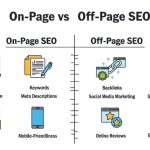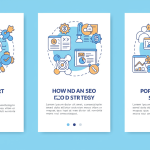
Organic traffic growth represents the holy grail of digital marketing. Unlike paid advertising that requires continuous investment, organic traffic compounds over time, delivering sustainable results that strengthen your online presence while reducing customer acquisition costs.
The key to successful organic traffic growth lies in understanding your audience’s needs, creating valuable content that addresses those needs, and optimizing your website to help search engines connect your content with the right people at the right time.
Understanding the Fundamentals of Organic Traffic Growth

Before implementing specific tactics, it’s crucial to understand what drives organic traffic and how search engines determine which content deserves visibility.
What Qualifies as Organic Traffic
Organic traffic consists of visitors who find your website through unpaid search engine results. These users actively search for information, products, or services related to your business, making them more likely to engage meaningfully with your content.
Search engines like Google use complex algorithms to evaluate hundreds of ranking factors when determining which pages to display for specific queries. These factors include content relevance, website authority, user experience signals, and technical optimization elements.
The Compounding Nature of Organic Growth
Unlike paid advertising that stops generating traffic when you stop spending, organic traffic growth builds momentum over time. High-performing content continues attracting visitors months or years after publication, creating a sustainable foundation for your digital marketing efforts.
This compounding effect means that consistent efforts to improve your organic traffic today will yield increasingly valuable returns as your content library grows and your website authority strengthens.
Conducting Strategic Keyword Research
Effective keyword research forms the backbone of any successful organic traffic growth strategy. Understanding what your target audience searches for allows you to create content that matches their intent and interests.
Identifying High-Value Keywords
Start by brainstorming topics relevant to your business, then use keyword research tools to uncover specific terms your audience uses when searching for related information. Look for keywords with substantial search volume but manageable competition levels.
Long-tail keywords often provide excellent opportunities for organic traffic growth. These longer, more specific phrases typically have lower competition while attracting highly qualified visitors who are closer to making decisions.
Analyzing Search Intent
Understanding why people search for specific terms helps you create content that satisfies their needs. Search intent generally falls into four categories: informational (seeking knowledge), navigational (finding specific websites), commercial (researching products), and transactional (ready to purchase).
Align your content strategy with different intent types to capture visitors at various stages of their journey. Informational content builds awareness and establishes expertise, while commercial and transactional content drives conversions.
Creating High-Quality Content That Ranks
Content quality remains the most important factor in organic traffic growth. Search engines prioritize content that provides genuine value to users, answers their questions thoroughly, and keeps them engaged.
Developing Comprehensive Topic Coverage
Create content that thoroughly addresses your target keywords and related topics. Comprehensive coverage demonstrates expertise and provides more opportunities to rank for multiple related search terms.
Structure your content using clear headings and subheadings that make it easy for both readers and search engines to understand your main points. Include relevant examples, data, and actionable advice that readers can implement immediately.
Optimizing Content for Featured Snippets
Featured snippets appear at the top of search results and can significantly increase your organic traffic. Structure portions of your content to directly answer common questions using lists, tables, or concise paragraphs.
Use question-based headings and provide clear, specific answers immediately following those headings. This format improves your chances of earning featured snippet placement while making your content more scannable for readers.
Maintaining Freshness and Relevance
Search engines favor fresh, up-to-date content. Regularly update existing articles with new information, recent statistics, and current examples to maintain their ranking potential.
Create editorial calendars that include both new content creation and existing content updates. This systematic approach ensures your content library remains current and continues driving organic traffic growth over time.
Building Website Authority Through Link Building
Link building remains a crucial component of organic traffic growth. High-quality backlinks from reputable websites signal to search engines that your content is valuable and trustworthy.
Earning Natural Backlinks
Focus on creating content so valuable that other websites naturally want to reference it. Original research, comprehensive guides, and unique insights tend to attract organic link acquisition.
Build relationships with other content creators, industry experts, and publications in your space. Genuine networking often leads to collaboration opportunities and natural link placement.
Guest Content Opportunities
Contributing high-quality content to established websites in your industry can expose your expertise to new audiences while earning valuable backlinks to your site.
Research publications that accept guest contributions and align with your target audience. Pitch unique, valuable content ideas rather than promotional pieces to increase acceptance rates and audience engagement.
Optimizing Technical SEO Elements
Technical optimization ensures search engines can effectively crawl, index, and understand your website content. Poor technical SEO can prevent even excellent content from ranking well.
Improving Site Speed and Performance
Page loading speed directly impacts both search rankings and user experience. Optimize images, minimize code, and choose reliable hosting to ensure fast loading times across all devices.
Use tools like Google PageSpeed Insights to identify specific performance issues and prioritize fixes that will have the greatest impact on your organic traffic growth.
Ensuring Mobile Responsiveness
Mobile-first indexing means Google primarily uses your website’s mobile version for ranking purposes. Ensure your site provides excellent user experiences across all device types.
Test your website regularly on various devices and screen sizes to identify potential usability issues that could impact your search engine visibility.
Implementing Proper URL Structure
Create clean, descriptive URLs that help both users and search engines understand your content topics. Include target keywords naturally while keeping URLs concise and readable.
Maintain consistent URL structure across your website to improve navigation and help search engines understand your site’s organization and hierarchy.
Leveraging Analytics for Continuous Improvement
Data-driven optimization is essential for sustained organic traffic growth. Regular analysis helps you identify what’s working, what needs improvement, and where new opportunities exist.
Monitoring Key Performance Indicators
Track metrics that directly relate to your organic traffic growth goals: organic search impressions, click-through rates, average position rankings, and conversion rates from organic visitors.
Use Google Search Console to understand which queries bring visitors to your site and identify opportunities to improve existing content or create new pages targeting related keywords.
Identifying Content Gaps and Opportunities

Analyze your competitors’ content strategies to identify topics they’re covering that you haven’t addressed. These gaps represent opportunities for new content that could capture additional organic traffic.
Look for keywords where you rank on page two of search results. These represent your best opportunities for quick improvements through content optimization and enhanced user experience signals.
Building Long-term Organic Traffic Success
Sustainable organic traffic growth requires consistent effort, patience, and adaptation to changing search engine algorithms and user behaviors.
Focus on creating genuine value for your audience rather than trying to manipulate search engine rankings. Search engines continuously improve at identifying and rewarding content that truly serves user needs.
Stay informed about SEO best practices and algorithm updates, but avoid chasing every trend or quick fix. Fundamental strategies like creating excellent content, building authority, and providing great user experiences remain the most reliable path to long-term organic traffic growth.
Remember that organic traffic growth is a marathon, not a sprint. Consistent application of these strategies will compound over time, creating a sustainable foundation for your digital marketing success that continues generating value long after the initial investment.


















No Comments